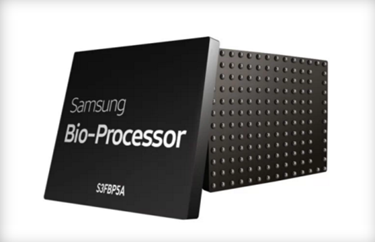Samsung's Bio-Processor Sets Higher Bar Higher For Health Wearables

Samsung is aiming to add more functionality and efficiency to wearable health monitors with a new chip — the Bio-Processor — that integrates five different sensors to track heart rate, skin temperature, body fat, skeletal mass, and sweat. The all-in-one chip is already in mass production and new products featuring the technology are expected early next year.
According to The Verge, fitness trackers introduced in 2015 were more lackluster than expected. The Verge stated that the Apple Watch was originally planned to be more versatile, and both Apple and Samsung’s earlier generation wearable health products don’t do much more than monitor health rate.
The market is teeming with heart rate monitors and step trackers of varied quality, and Samsung’s addition of new biometric monitors attempts to set the company’s devices apart, depending on how well the integrated sensors end up performing.
“With improvements in smart fitness devices and an increase in consumer health consciousness, more and more people are looking for ways to monitor various personal bio-data, or fitness data, to constantly manage their health,” said Ben K. Hur, VP of marketing, System LSI business at Samsung, in a press release. “Samsung’s Bio-Processor, which can process five different biometric signals, is the most versatile health and fitness monitoring chip available on the market today and is expected to open up many new health-based service options for our customers.”
According to Samsung, the chip was designed to be both small — for maximum wearability — and versatile. In total, Bio-Processor contains five analog front ends (AFEs): bioelectrical impedance analysis (BIA), photoplethysmorgram (PPG), electrocardiogram, skin temperature, and galvanic skin response. Samsung claims that combinations of these signals could be used for a variety of indications.
To speed innovation and understanding of the device, Samsung plans to make several wearable reference platforms available to other companies developing wearables, helping to demonstrate its potential. While Samsung certainly will market its own devices, Engadget points out that the company is likely to license the technology to other companies, as it has in the past.
Recent reports by Reuters and Chilmark have said that the surge in wearable devices is in response to the demands of the Affordable Care Act’s insistence that healthcare be value-based, with a broader focus on preventative care. Virtual disease and health management is one solution aimed at keeping people out of the ER and the doctor’s office, which could reduce healthcare costs.
Reuters cited Sorean Research, which projected that the wearable healthcare market will be worth $41 billion in 2020, and it named cardiovascular disease and diabetes as segments with the largest growth potential.
Anticipated Samsung wearable monitors include patches and wristbands, though there is no word on specific products that will be released. Samsung plans to unveil the first generation of devices powered with the Bio-Processor chip in early 2016.
